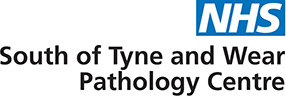Cerebellum(Purkinje) Cell and Neuronal Nuclear Antibody IIF Screen
Code:
NEU
Sample Type:
2mL Serum (Gel 5mL Yellow tube)
Ref Ranges/Units:
Negative or Positive
Normal result = Negative
Turnaround:
10-14 days
Frequency of Analysis: 1-2 weeks
Special Precautions/Comments:
Method: Indirect immunofluorescence (IIF). Calibration: N/A. EQA scheme: UK NEQAS scheme for Paraneoplastic Antibodies. IQC: Commercial preparation
Interferences: ANNA must be differentiated from anti-nuclear antibodies (ANA) which are not specific to neuronal cells. Therefore, it is sometimes necessary to test for ANAs by also performing the HEp test on the specimen to exclude ANA as a probable cause of ANNA (Hu or Ri staining).
Interpretations: Results are reported as either:- Negative or Positive and are used to confirm a positive from the immunoblot. A test result should not be considered of diagnostic value in itself, but used in conjunction with details of the patient’s clinical symptoms, clinical history and any other available data to produce an overall clinical diagnosis
Additional Information:
Test includes Neuronal Nuclear Antibody IIF Screen.
Indication: Paraneoplastic neurological syndrome. Used to confirm a positive result from the Neuronal antibody profile test
Background Information: Paraneoplastic syndromes (PNS) are remote effects of cancer on the nervous system. Examples include paraneoplastic limbic encephalitis (PLE), subacute sensory neuronopathy (SSN), paraneoplastic cerebellar degradation (SSN), paraneoplastic cerebellar degradation (PCD) and paraneoplastic opsoclonus-myoclonus (POM). Virtually any cancer can result in PNS but some cancers are more frequently encountered such as small cell lung carcinoma, breast and ovarian and plasma cell tumours [1]. Anti neuronal nuclear antibodies are paraneoplastic antibodies and exist as two variants, ANNA-1 and ANNA-2. ANNA-1, which are also known as Hu antibodies, are reactive with proteins of neuronal nuclei at a high titre (>1/100). These antibodies react with neuronal nuclei in both peripheral and central nervous systems. ANNA-1 are found in serum and CSF of patients with small-cell lung carcinoma (SCLC) complicated by various paraneoplastic neurologic syndromes, including subacute sensory neuropathy and paraneoplastic encephalomyelitis. They can also rarely be seen in cases of breast and prostate carcinoma. In patients with ANNA-1, these neurologic disorders are generally thought to be the result of an autoimmune process in which antibodies to antigens expressed in tumour tissue are directed against similar antigens of the central nervous system. ANNA-2 are also known as anti-Ri antibodies. ANNA-2 can be found in both serum and CSF of patients suffering from neuroblastoma (children), SCLC (adults) or breast tumours (adults). These antibodies are seen in the neurological syndrome paraneoplastic opsoclonus (or opsoclonus myoclonus) but may present as a multifocal encephalomyelopathy. The antibody differs from ANNA-1 in that the target antigen is restricted to cells within the central nervous system and not the peripheral nervous system. Purkinje cell cytoplasm antibodies, also called Yo antibodies, are associated with subacute or paraneoplastic cerebellar degeneration (PCD) and can indicate an underlying neoplasm. In women with PCD and high titre Yo antibodies, the associated malignancy is most often gynaecologic (especially ovarian) or breast. Hu antibodies are also occasionally to be found in PCD patients who have an occult small-cell lung cancer. Yo stains the cytoplasm of Purkinje cells only. Yo is found at low titres (<1/100) in some normal individuals. Positive immunofluorescent samples are confirmed by specific immunoblotting assay. Patients with PNS often present with neurological symptoms before the underlying cancer is detected so it is therefore important to test for these onconeural antibodies in suspected PNS. The results of these antibodies can give clues to the underlying cancer and aid diagnosis [2]. In most cases immunosuppressive therapy can be unhelpful and outcome can be poor [1].
References: Toothaker TB, Rubin M. Paraneoplastic neurological syndromes: a review. Neurologist. 2009. 15(1): 21-33. [Ref 1] Vedeler CA, et al. Management of paraneoplastic neurological syndromes: report of an EFNS task force. European Journal of Neurology. 2006. 13: 682-690. [Ref 2] Benyahia B, et al. Paraneoplastic antineuronal antibodies in patients with systemic autoimmune diseases. Journal of Neuro-oncology. 2003. 62(3):349-351. Darnell RB, Posner JB. Paraneoplastic syndromes involving the nervous syndrome. New England Journal of Medicine. 2003. 349(16):1543-1554. Greenlee JE, et al. Antibody types and IgG subclasses in paraneoplastic neurological syndromes. Journal of the Neurological Sciences. 2001. 184(2):131-137. Bradwell AR. Paraneoplastic neurological syndromes associated with Yo, Hu and Ri antibodies. Clinical Reviews in Allergy and Immunology. 2000. 19(1):19-29.
See Also: Neuronal blot
Telephone Gateshead Lab: 0191.4456499 Option 4, Option 1


